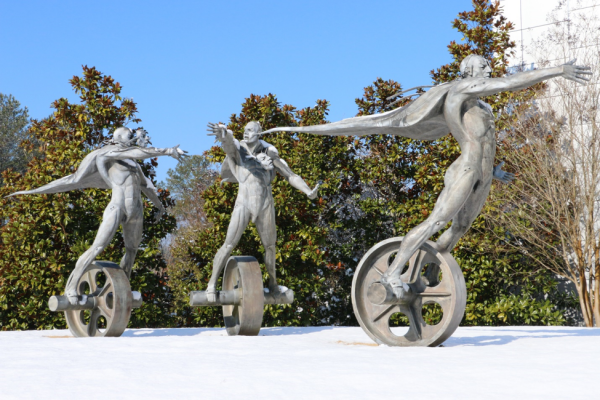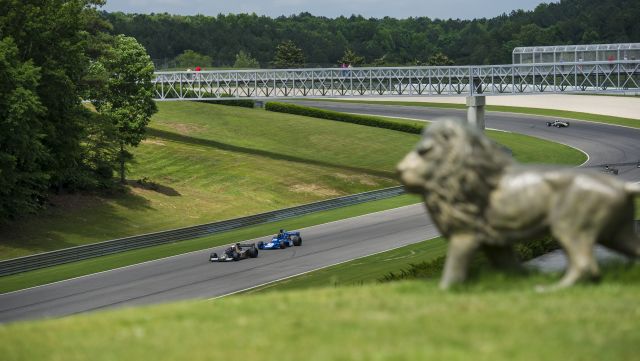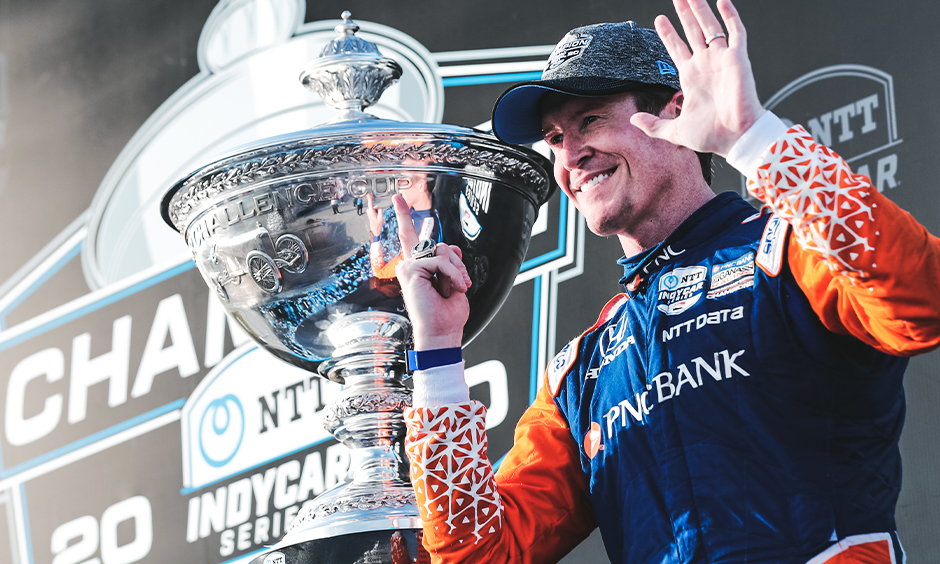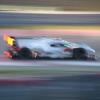
2021 ahoy! A pretty long offseason, although not by recent standards, draweth to a close and we are surprised once again by the virtue, inspiration and petty jealousies of 20+ Indycar drivers, their engineers, and the circus’s many hundreds, if not millions, of divers hangers-on. The Indycar series being what it is, we do not enter into things gently but with four races in a fortnight, this weekend’s race at Barber giving way to one at St Petersburg a week later and two at Texas on the weekend after that. Yes! Two weeks after this weekend’s race, the season will be almost one-quarter finished. I suppose when I think about it my life is more than one-quarter finished so it’s not very gracious to criticize the mote in 2021’s eye.
But we are getting (slightly) ahead of ourselves. This is the 11th running of the Indy Grand Prix of Alabama (and the first Indycar season to begin in the Deep South since, er, 1983?), all eleven of which have been held at the twisty, undulating, verdant and besculptured (figurative, mostly nonclassical) confines of Barber Motorsports Park, some 15 miles outside of Birmingham, Alabama. Traditionally it’s been a hunting ground of Southron Josef Newgarden (he picked up his first victory there for Sarah Fisher in 2015), but the most recent edition in the very-long-ago 2019 was dominated by Takuma Sato, driving for Bobby Rahal and co. It was also the site back in 2012 of the only thing approaching a good result from the Lotus/Judd engine programme, as Sebastien Bourdais used all his skills to keep ahead of some much more powerful rivals. The track is 2.38 miles long, which translates to 90 laps of racing, provided the weather is good (which it will be) and drivers stay out of the gravel (less certain).

Here’s your schedule: two days of Indycar action, plus a Friday containing every possible variation of junior single seater with a two-litre engine

(All times Alabama local time, i.e. US Central Daylight Time. Add 6 hours for the UK.)
Friday, 16 April
11-11.30am: Indy Lights qualifying 1
3-3.30pm: Indy Lights qualifying 2
Saturday, 17 April
8am: USF2000 race 1
10-10.45: Indycar practice 1
11.10: Indy Pro 2000 race 1
12.15pm: Indy Lights race 1
1.40-2.25: Indycar practice 2
3.50: USF2000 race 2
4.55: Indycar qualifying
Sunday, 18 April
9.15am: Indy Pro 2000 race 2
10.30-11: Indycar warm-up
12.20pm: Indy Lights race 2
2.42: Indycar race go go go

What’s the 2021 season about?
Technically speaking, it’s same old: Dallara’s old warhorse of a spec chassis (remember when it was new?), 2.2-litre V6 turbo engines, Chevrolet (built by Ilmor Engineering of Brixworth, or perhaps Michigan) and Honda (HPD in California), deflector shield guaranteeing sports car style cockpit temperatures, and for some reason never fully explained, red-hot suspension development giving the top teams a reliable final percentage of speed over the rest of the riffraff who bob up and down the order seemingly at random. The car handles easily in traffic and yet finding a good setup often seems a struggle. Times are close but you can see individual drivers making the difference.
As for the calendar, we’re still in a Covid-19-y sort of world and there are lots of tracks out of order, like stumbling across the North American release of a familiar album. It’s 17 races in total: Iowa is gone from last year and the Richmond date has evaporated, with a street circuit at Nashville booked instead. Along with Barber, Detroit, Toronto (at least for now), Portland and Laguna Seca are back. Long Beach is too, but it’s at the end of the year, and Texas now slots in at the beginning of May as the season’s first oval race. The number of IMS road course events drops from 3 to 2. All in all: it’s an OK calendar, but it needs more Cleveland.
Who’s racing? It’s your usual lot, albeit with some new faces and tweaked aspirations. I have prepared this handy guide, in 2020 championship order, roughly.
Chip Ganassi Racing (Honda)

Chip Ganassi has exclusive use of Scott Dixon and that is normally enough. The New Zealander’s powers, which are quickly passing into myth and legend, were enough to secure a sixth series championship, largely on the strength of four wins and two seconds in the first 8 rounds. Somewhat less impressive was the rest of the operation, with Felix Rosenqvist achieving his first win but little else, and fellow Swede Marcus Ericsson simply achieving little. Felix is out and Alex Palou of Spain and Dale Coyne Racing is in. The generously-sponsored Marcus Ericsson remains, and is joined by 2021’s ultimate wildcard, NASCAR’s Jimmie Johnson. Or rather, the former stock car champion is doing the road courses and Italian F3 graduate Tony Kanaan is doing the ovals, because life is complicated.
Team Penske (Chevrolet)

Indycar’s traditional Death Star, Roger Penske’s Team Penske of Penskeville North Carolina, is back with three of the same drivers plus one new Kiwi driver who has already competed in as many Indycar races (1 (one)) as the previous Australian touring car import, Jason Bright. So it’s 2020 runner-up and double series champion Josef Newgarden, backed up, or perhaps backed into, by 2014 champion Will Power, 2016 champion Simon Pagenaud and “won everything in Australia” champion Scott McLaughlin. Tim Cindric, Mr Smithers to Roger Penske’s Monty Burns (enough analogies), is not known to be wild about this four-car arrangement and a reduction to three may be in the offing. At any rate, it’s good to say it as often as possible in order to keep the “Simon Pagenaud/Will Power/Scott McLaughlin has ONE Indycar race to SAVE his CAREER” machine ticking over. I suppose what I’m trying to say is that unlike some other quartets in Indycar, people will notice and comment icily if/when one of them doesn’t excel.
Andretti Autosport (Honda)

Third of Indycar’s leading quartets, Andretti Autosport are nonetheless odd one out as they have downsized to reach that number after Nazareth scion Marco Andretti reduced his racing commitments to the Indy 500 only. So we’ll still be seeing him in a month or so. What about the remaining four? They make up 2021’s only all-North American line-up: the 21st century’s Colton Herta is back leading the team after an excellent but uneven 2020, with former Andretti alphas Alexander Rossi and Ryan Hunter-Reay also returning to try and regain their place at the front of the order and generally cause trouble. Canadian James Hinchcliffe is also returning, after a few more years away, in a bid to rekindle the magic of 2013. Was 2013 magical? What are years anyway? These questions, and more: all to come from the Andretti team.
(Mc)Schmidt-Peterson (Chevrolet)

The Schmidt-Peterson team continues its Arrow Electronics and McLaren fuelled ascent into Indycar’s stratosphere, or at least whatever sphere they used to occupy before Simon Pagenaud left. 2020’s fourth-in-points Pato O’Ward was the year’s best winless driver, and will be paired in 2021 with Indycar’s worst winning driver (that is, if you believe the championship table), Felix Rosenqvist. The two of them had a proper old duel at Road America last year, which resulted in victory for the Swede and a lightly battered second place for the Mexican. So you might say they’re well-matched. Juan Pablo Montoya (who?) will be in a third car for May to help out with the team’s Indy 500 campaign. More on that, as Frasier Crane would say, anon.
Rahal-Letterman-Lanigan Racing (Honda)

Last of the big teams or first of the small teams? 1992’s CART PPG Cup winners are back for a 29th championship non-victory, or at least so you would think. Attempting to awake from the nightmare of history are double(!) Indy 500 champion(!!) Takuma Sato(!!!), aged 44 and in the best form of his career, and son-of-Bobby Graham Rahal, who won a race for his dad’s team every year they had those trick aero bits but not before or since. Is he missing that cool Steak ‘n Shake firesuit? Almost certainly. Santino Ferrucci, who has the allure of one of hell’s minor demons, is a stock car racer these days but makes an exception for the Indy 500, which he will probably win. Abandon all hope.
Dale Coyne Racing (Honda)

Indycar’s greatest Sonny’s Pit BBQ franchise holder returns for another year of hiring weird drivers, occasionally beating the big teams and generally stirring up chaos in a world whose tectonic plates often seem to have cooled. This year, Dale brings us not one but two Haas F1 drivers: English literature’s Romain Grosjean (road courses) and his short-lived replacement at Team CNC, Pietro Fittipaldi (ovals). Ed Jones, who I think we’d all accepted we’d never see again, is back for a full season in the car vacated by Santino Ferrucci. Somebody called Cody “Wario” Ware may be racing a third Coyne car in the Indy 500, but then again, he may not. Is Pietro Fittipaldi any good at ovals? Where did Team Goh, er, go? Does Romain Grosjean believe in the stream of consciousness? As always with Dale Coyne Racing, we enter the season with more questions than answers.
Ed Carpenter Racing (Chevrolet)

What’s happening at Ed Carpenter Racing? Well, Ed Carpenter is still taking part in all the oval races. 2018’s Indy runner-up presumably doesn’t have many years left at the front but he does have five races at Texas, Indy and Gateway where he’s done well in the past. As usual(?) he’ll be handing over the keys on the road courses to Conor Daly, a man who has spent a decade doing about three years worth of Indycar races. Daly raced against Daniil Kvyat and Carlos Sainz, Jr en route to third in the 2013 GP3 series championship, competing with such exotic names as Facundo Regalia, Eftihios Ellinas and Emanuele Zonzini. Supermarket ribbon-cutter, 2020 rookie of the year and fan favourite (at least on here) Rinus Veekay has secured a second year with Ed’s team, where he’ll be aiming to improve on a season-best third-place finish at one the many Indy road course races last time out.
Meyer Shank Racing (Honda)

Michael Shank’s pink cars ranked as a minor but welcome surprise in 2020 and the team is back for a second full season with Lincolnshire’s Jack Harvey. Harvey normally qualified well and after a bumpy start put together a campaign of 6 top-ten finishes. MSR look good for the leader circle payments but a sign of their hopes for a better life comes in the form of three-time Indy 500 champion Helio Castroneves, who’ll be joining the team for Indy and then some more races at the back end of the year. Oh and apparently the Formula One Group is a minority investor in the team. What’s that about?
AJ Foyt Racing (Chevrolet)

AJ Foyt’s 2020 had a well-defined story with a beginning, a middle, and an end. In the beginning, Charlie Kimball, Tony Kanaan and Dalton Kellett struggled to score any results. In the middle, Foyt management realized their predicament and hired Sebastien Bourdais for the run-in. Bourdais finished fourth, by some distance the team’s best result of the year, and the #14 entry’s sweet top-22 payments were secured for another year. As a result, AJ has two full-time cars again this year, with happy-to-be-here Dalton Kellett and the aforementioned bacon-saver Sebastien Bourdais in for a whole year. Or so we think. Ghosts of seasons past Charlie Kimball and JR Hildebrand will pilot two additional Foyt entries at Indy.
Carlin (Chevrolet)

Finally, it’s Trevor Carlin’s Indycar team. Forum mascot Max Chilton is again at the wheel for most of the races, except for Texas and Gateway where in the style of a well-to-do American Civil War draftee he has found a substitute (probably Conor Daly) to race the ovals for him. This is the team’s fourth year of competition in Indycar but a couple of early Charlie Kimball smash-and-grabs aside, they have scored no notable results. As the man said, it’s the I-Don’t-Know-Where-I’m-Going-But-I’m-Going-Nowhere-In-A-Hurry Blues.
And that is it. Or more accurately, this is the beginning. Please post below to fill in what I’ve missed. Wheels start turning on Saturday. Keep the thread on page 1 till then. Thx.




































